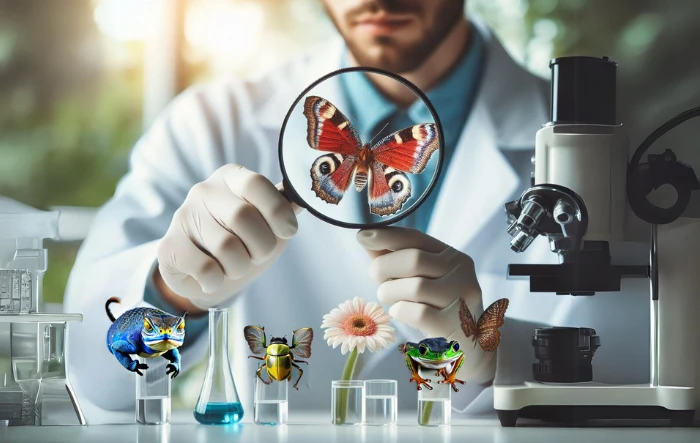In 2023, an incredible discovery unfolded as scientists worldwide unveiled 815 new species, a testament to the endless mysteries our planet still holds. This remarkable finding coincided with the 50th anniversary of the US Endangered Species Act, a pivotal law safeguarding countless threatened species, as highlighted by Scott Sampson, the executive director of the California Academy of Sciences.

With nations around the world facing extreme biodiversity challenges, the UK’s Natural History Museum and the California Academy of Sciences brought a ray of hope. In a record-breaking feat, they officially documented 815 new species in 2023 alone.
The museum, in a statement, emphasized the crucial role of these discoveries: “Knowing about these species is the first step in protecting them. Identifying new species is a fundamental part of our efforts to halt and reverse the alarming decline in biodiversity we’re witnessing in the natural world.”
Before we get to the list, a quick disclaimer… If you’ve read any headlines on this topic, you’ll no doubt notice that most news organizations and media are talking about the record-setting nearly 1,000 new species discovered in 2023. 968 to be exact. So why is Dakoa listing only 815 species when everyone else is saying nearly 1,000? The answer is simple.
Transparency! We’re more interested in making your life a little greener, and helping you stay informed, than we are click baiting our headlines. 153 of those newly discovered species are, in fact, long extinct. Yes, a giant extinct penguin species about the size of a panda was discovered in 2023 but, as we don’t have the capability for time travel, it’s highly unlikely you’ll run into those animals so we’re not including fossil finds on the list.
Here are some of the most curious and unusual species to be discovered in 2023, the ones we think you’ll find the most interesting (because we did).
And before you get too excited imagining the fun, cute, new mammals’ scientists have come across this past year, you should know that 2023 was, in fact, the year of the wasp.
Of the 815 new species, 619 of them were different types of wasps covering every wasp-y angle from pollinating, predatory and parasitic.
1. The Dalek Wasp

The recent surge in the discovery of new species owes much to the dedicated research of Dr. John Noyes and Christer Hansson, both affiliated with the Natural History Museum. Their focus has been on unveiling the diverse species of bees, ants, and wasps in Costa Rica.
Dr. Noyes emphasizes the significance of this endeavor: “It is important to keep describing new species because many will have a profound influence on their environment and without knowing what to call them, we cannot convey any information about them.”
Among these discoveries, several wasp species stand out with their striking metallic colors, ranging from blues to purples and oranges. Demonstrating his fondness for the British sci-fi classic “Doctor Who,” which celebrated its 60th anniversary in 2023, Dr. Noyes paid homage by naming a new genus of wasps after the show’s iconic villains, the Daleks, and their creator.
“I thought it was a good name for a genus and a bit of fun, having been a big fan of Doctor Who in my early years,” Dr Noyes explained.
While often regarded merely as pests with stingers, these wasps play a crucial role in managing pest populations, thereby protecting agricultural crops.
Dr. Noyes further highlighted their importance: “In the past 60 years or so, three species have been incredibly important. One in preventing the possible starvation of up to 300 million people in Africa, a second preventing the rainforest from destruction in Thailand, and another the collapse of the economy of Togo.” This statement underscores the vital ecological role these insects play in various regions across the globe.
2. The Giant Crab Spider
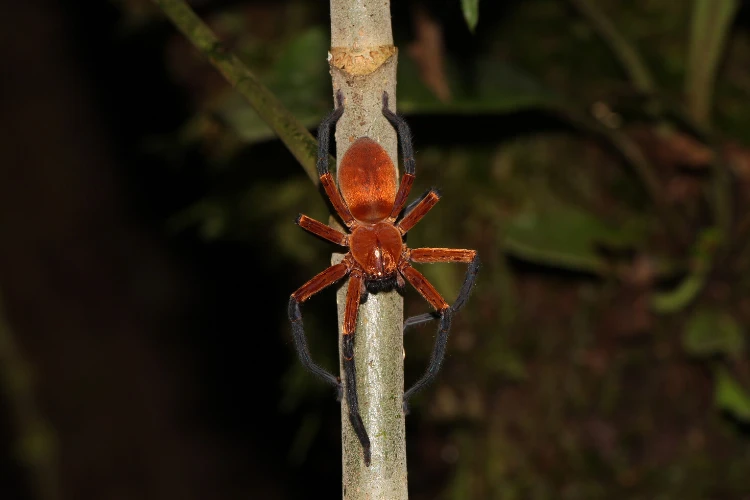
For those who aren’t fond of spiders, you might want to brace yourselves. This year, an astonishing discovery was made in the depths of the Ecuadorian Amazon—a spider of colossal proportions, marking the first of its kind to be found in this South American nation.
The discovery was made by Pedro Peñaherrera-R. and Diego Cisneros-Heredia, who, during a nighttime expedition near the Tiputini Biodiversity Station in Ecuador, encountered this giant crab spider. Belonging to the genus Sadala, the spider was christened Sadala rauli, a touching tribute to Peñaherrera-R’s grandfather.
This impressive creature, with its eight watchful eyes and eight sprawling legs, boasts a striking fuzzy orange-red abdomen. It is a master of ambush, skillfully hiding among foliage or on tree trunks, ready to leap out and capture unsuspecting insects.
3. The Snake Named After Leonardo DiCaprio
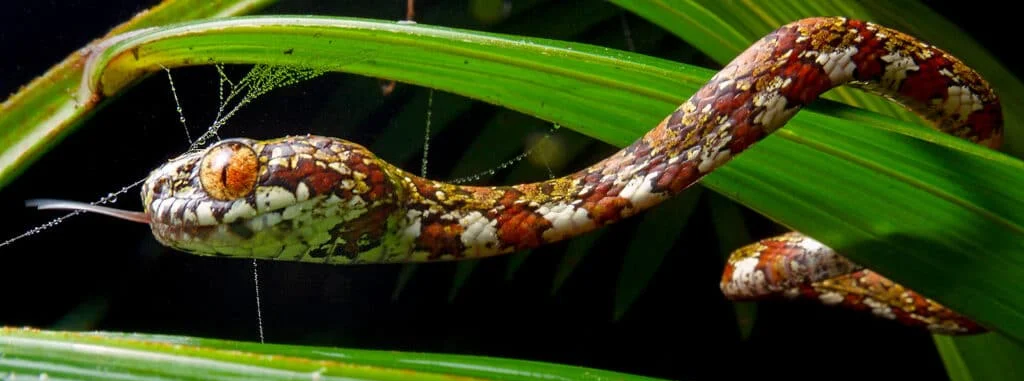
2023 was a remarkable year for herpetologists, with five new snail and slug-eating snake species discovered.
Researchers gave the Academy-award winning actor the opportunity to name one of the five arboreal snakes, meaning they live in trees and can’t survive in dry conditions. DiCaprio’s snail-eating snake is known as Sibon irmelindicaprioae.
Interestingly, the name pays homage not just to DiCaprio himself, but also to his mother, Irmelin.
Found in the verdant regions of Panama and Colombia, this snake unfortunately depends on a vulnerable biodiversity in an area ridden with illegal goldmining that’s deforesting its territory.
In unveiling this species, the researchers classified it as Near Threatened, as the snake’s forest home, is also increasingly being converted into farmland, posing a significant threat to its survival.
4. The Spiny-Throated Frog With No Voice
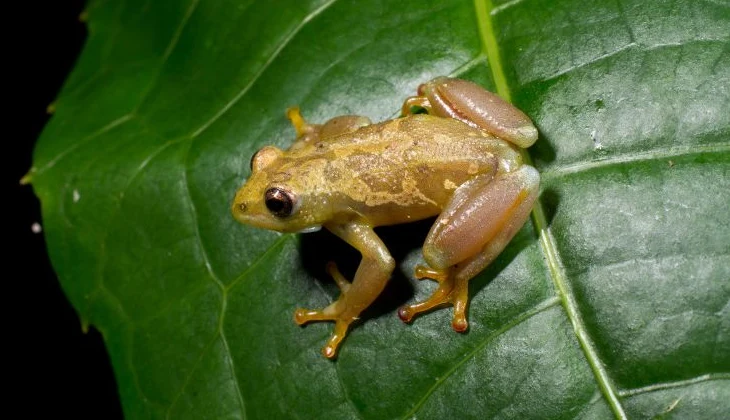
In Tanzania, while searching for a different amphibian, researchers came across a new frog species with a distinctive characteristic: it’s entirely silent. This unique frog, named the Ukaguru spiny-throated reed frog, stands out for its lack of the typical croaks, songs, or ribbits associated with its kind. Found in Tanzania’s Ukaguru Mountains, which lend the species its name, Hyperolius ukaguruensis is part of a rare group of less than a handful of frogs worldwide that do not vocalize to communicate with each other.
This new species is categorized within the “spiny-throated” reed frogs. True to their description, these frogs have tiny spines on the male’s throat. Since vocalization isn’t an option for these frogs, they may rely on these spines for species identification and communication.
Lucinda Lawson, a conservation biologist, and assistant professor of research at the University of Cincinnati, finds this group of frogs quite extraordinary. She explains, “The male frogs don’t call like most other frogs do. We think they may use the spine as something like Braille for species recognition. Without a call, they need some other way to recognize each other.”
These frogs, belonging to a small group with limited species, are found in small populations, making them rare and susceptible to extinction, which makes the discovery of a new member in this group that much more exciting.
5. The Worm-Like Lizard With No Limbs
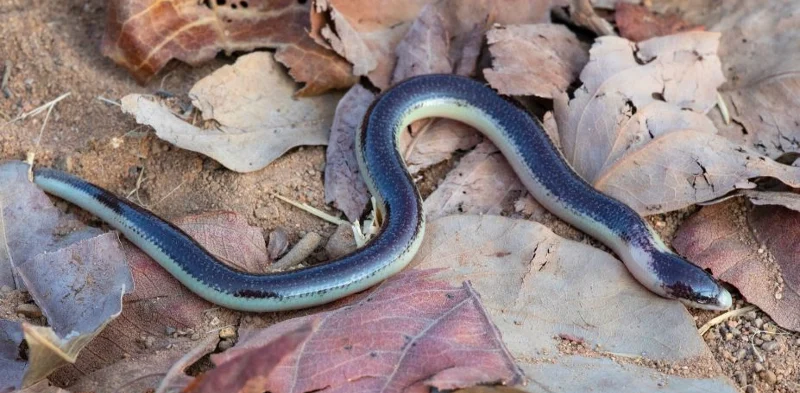
In the remote Serra da Neve region of Southern Africa, nestled within the mountains of Angola, a group of scientists surveying the local wildlife, discovered a new species: the Serra da Neve lance-skink, or Acontias mukwando.
It’s a medium-sized, completely limbless lizard, measuring about 6.8 inches. The Serra da Neve lance-skink, found under rocks among the leaves, has a rather interesting appearance. It has a cylindrical body, movable eyelids, and no ear openings, resembling a cross between a worm and a snake. Its skin displays a pinkish hue with a darker brown band along its back, and a striking cream-colored “collar” near its neck, giving it a unique coloration pattern. The underside of the skink features patches of pink, purple, and blue.
The species was named in honor of the Mukwando tribe, acknowledging their hospitality and the knowledge exchange during the fieldwork.
“This species was named in honor of the local tribe, the (Mukwando), in recognition of all the hospitality, friendship and local knowledge exchange during our fieldwork,” Mariana Marques, a member of the discovery team, wrote.
6. The Thorn-Tailed Gecko With Psychedelic Eyes That Spouts Goo From Its Tail
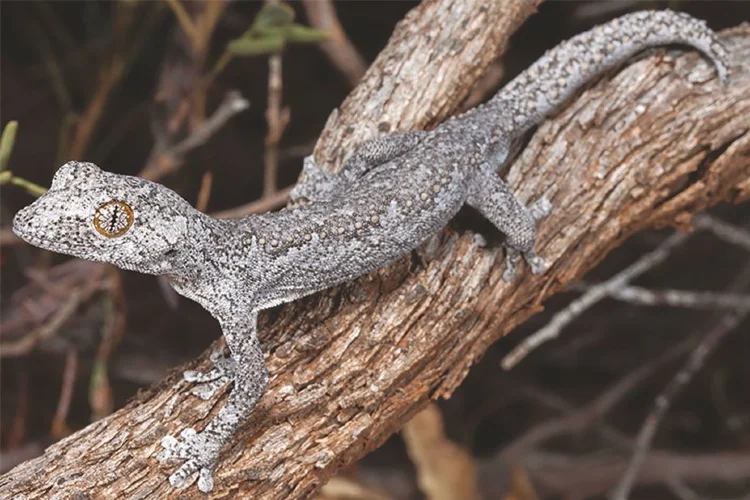
Comprising around 20 recognized species endemic to Australia, these lizards are commonly referred to as spiny-tailed or striped geckos. Small and nocturnal, they typically range in length from 1.4 to 3.5 inches. And as of 2023 there’s a new addition to the Strophurus genus that boasts a few unique characteristics.
This new species, named Strophurus spinula or the lesser thorn-tailed gecko, is about 2.4 inches (6.1 cm) long. It stands out from other members of its genus by several characteristics, such as a relatively straight and discontinuous row of enlarged unicolored tubercles along the body’s dorsolateral margin and a tail adorned with a single row of enlarged unicolored spines on either side of the original tail.
But, it still possesses the one remarkable feature of all Strophurus species, their distinctive defense mechanism. They have glands that secrete a foul-smelling fluid from their tail that deters birds from preying on these small lizards. The fluid itself is entirely harmless, but the birds don’t know that! It smells incredibly toxic, and that’s enough to keep the birds away. A
The team from the Australian Museum Research Institute that discovered the new gecko wasn’t expecting to find a new species. Team leader, Dr. Ross Sadlie said, “We present an unexpected discovery of a cryptic species previously assigned to Strophurus assimilis in the course of a broadscale survey of genetic variation in the genus.”
7. A Bone-Eating Deep Sea Worm
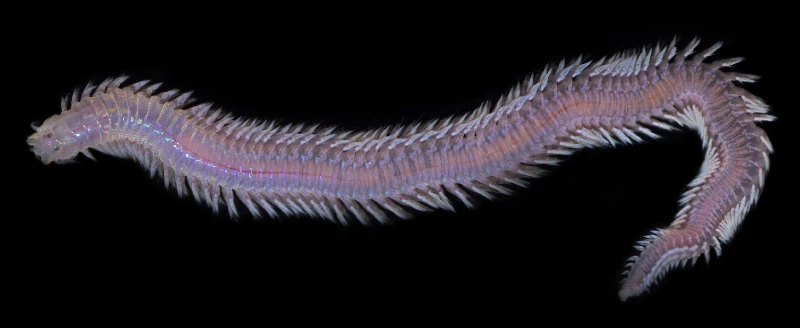
Neanthes visicete, a recently discovered species of polychaete worm, was discovered off the Australian coast of Byron Bay in New South Wales. The worm was found on the carcass of a whale. Polychaete worms, a diverse group of annelids, are known for their distinctive segmented bodies and bristle-like setae. These worms play a vital role in marine ecosystems, by breaking down and recycling organic matter. Essentially, they’re the buzzards of the deep ocean.
The polychaete worms, including Neanthes visicete, have adapted to feed on the bones of marine animals. This bone-eating behavior aids speed up the decomposition of large animal remains in the often cold waters of the deep-sea ecosystem.
8. The Beetle With The Color Shell That Requires No Color Enhance Filters

There were 58 new species of beetles named. This has included a number of vivid green and pinkish-orange darkling beetles from China and Laos, and four new long-snouted weevils from South Africa.
2023 was a boon year for entomologists! Beyond the 619 new wasp species that were discovered, insect scientists also added 58 new species of beetles, including the standout Anthromacra qiang. This species of darkling beetle, found in China, is notable for the striking appearance of males of the species.
The vivid colors (as seen above) and patterns on the male beetle’s exoskeleton not only make it a subject of fascination for entomologists but also raise questions about its role in the species’ behavior, mating rituals, and adaptation strategies.
Darkling beetles, belonging to the family Tenebrionidae, are known for their adaptability, and can be found in various habitats worldwide. They act as decomposers, breaking down plant and animal matter.
9. The Swamp Eel In India Whose Body Fascinates Scientists
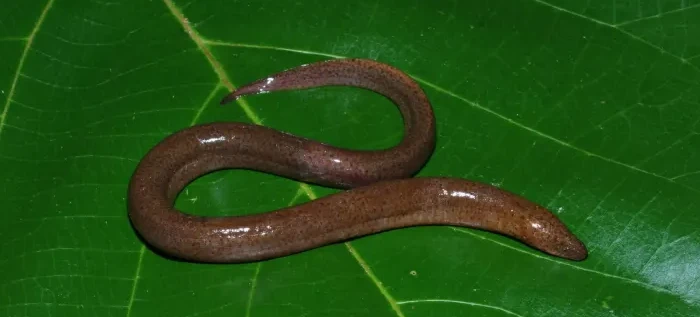
No to be outdone by the insects, the world of aquatic biodiversity also welcomed a new member in 2023 with the discovery of a new species of swamp eel, Ophichthys terricolus, in Assam, India.
Swamp eels are known for their elongated bodies and reduced or absent pectoral and pelvic fins in comparison to their ocean-dwelling cousins. These adaptations allow them to navigate the muddy waters of swamps and wetlands with ease.
The new species has a striking resemblance to its common cousin that’s well-known in the region. However, despite these similarities, Ophichthys terricolus sets itself apart in several key aspects of its anatomy.
One of the primary distinguishing features is the number of abdominal vertebrae. While the common swamp eel typically has between 95 and 100 abdominal vertebrae, Ophichthys terricolus has fewer, with between 79 and 80. It also possesses a longer preanal region – the section of the body before the anal opening – and a shorter postanal region, the area following the anal opening. The posterior part of this new species is notably wider and higher compared to its more common relative. Researchers believe these unique adaptations, that haven’t been documented previously, reflect the unique evolutionary path and adaptation strategies of Ophichthys terricolus to its specific habitat in the wetlands of Assam.
10. The Australian Moth Found In London By A Complete Amateur

In a surprising twist of events, a new moth species was discovered in West London, far from its native habitat in Western Australia. This discovery began in 2021 when amateur moth enthusiast Barbara Mulligan from Ealing, West London, found an unrecognizable tiny brown moth in her moth trap. Unable to identify it, she sent it to a local expert, unknowingly uncovering a species more than 9,000 miles (14,500 kilometers) from its home.
As it turns out, the Natural History Museum has had this species of moth collecting dust in its collection since 1886 without anyone noticing. It was only through Barbara’s discovery and detailed analysis, including morphology and DNA, that the significance of this specimen was realized.
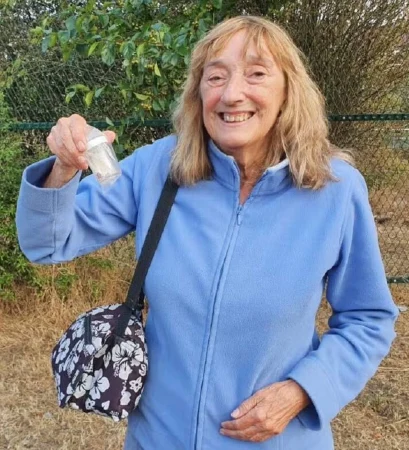
Mark Sterling, a Scientific Associate at the Natural History Museum, expressed his astonishment at this find: “What Barbara had found was an undescribed species. She found this extraordinary moth which has somehow come over from Western Australia and established itself in three or four places in West London.”
This discovery led to the new species named Tachystola mulliganae, in honor of its accidental discoverer, Barbara Mulligan.
The moth’s presence in London is likely due to imported plants, as suggested by Dr. David Lees, the Senior Curator for Microlepidoptera at the Natural History Museum. He noted, “These moths can feed on dead leaves, so they may be able to get through in leaf litter on plant pots and that kind of thing.” Despite efforts, no larvae have been found in Britain, indicating the moth’s recent arrival.
In closing...
The year 2023 has been a remarkable period for biodiversity, unveiling a treasure trove of new species across the globe, each with its unique story and significance.
From the silent melodies of the Ukaguru spiny-throated reed frog in Tanzania to the vibrant hues of Anthromacra qiang beetles in China, and from the unexpected journey of Tachystola mulliganae moths in West London to the deep-sea mysteries unraveled by the Neanthes visicete polychaete worm, these discoveries highlight the endless wonders of the natural world.
These findings not only add to the rich tapestry of life on our planet but also underscore the critical importance of preserving biodiversity.
Each species, whether dwelling in the depths of the ocean, the dense forests, or even in urban settings, plays a crucial role in the ecological balance.
The discovery of these species is a call to action for conservation efforts, reminding us of the delicate interconnections between humans and nature.
More To Discover
- Tiny Nuclear Battery Promises 50-Year Phone Charge, Breaking Radioactive Ground
- Enviva’s Wood Pellet Plant in Georgia, the World’s Largest, Is Exceeding Pollution Limits According To State
- How The Propane Industry Spent $30M On A Greenwashing Campaign To Rebrand Itself As Sustainable
- Texas A&M Researchers Explore Black Soldier Fly’s Potential in Tackling State’s Manure Issue
Moreover, the stories behind these discoveries – from citizen scientists in London to dedicated researchers in remote regions – celebrate the spirit of curiosity and exploration that drives scientific advancement. These new species aren’t just biological curiosities; they’re symbols of hope, demonstrating that our planet still holds many secrets waiting to be discovered.
As we step into the future, let us carry forward the momentum of 2023, continuing to explore, understand, and protect the incredible diversity of life that our world has to offer.
Or, as a statement from the UK’s Natural History Museum masterfully summed up, “We are unable to protect what we don’t know, and so describing new species is an integral aspect that underpins much of the work in protecting, preserving and reversing the declines in biodiversity seen across the natural world.”







